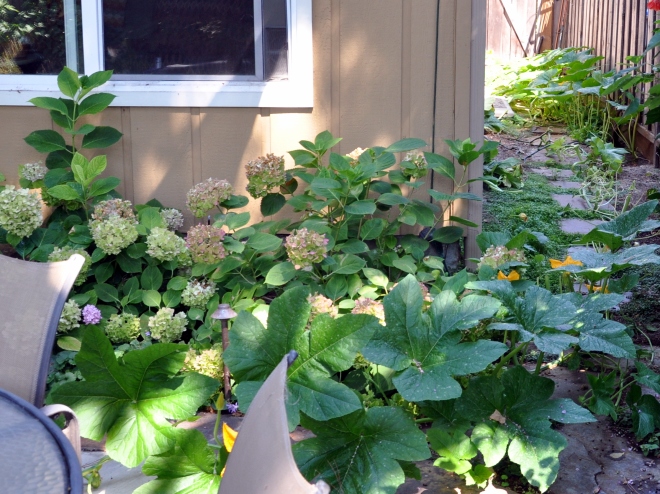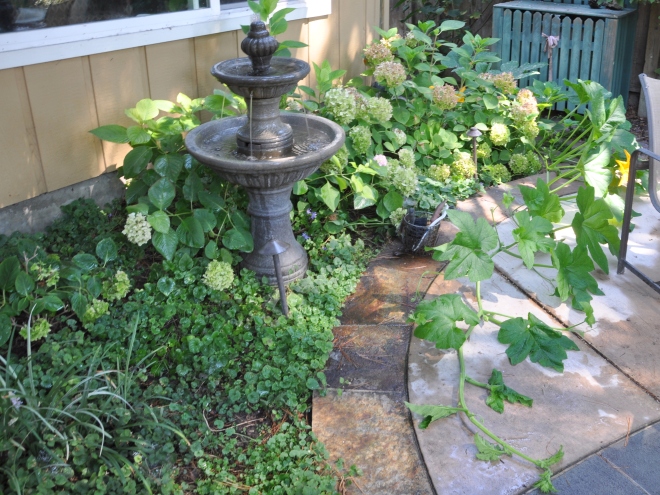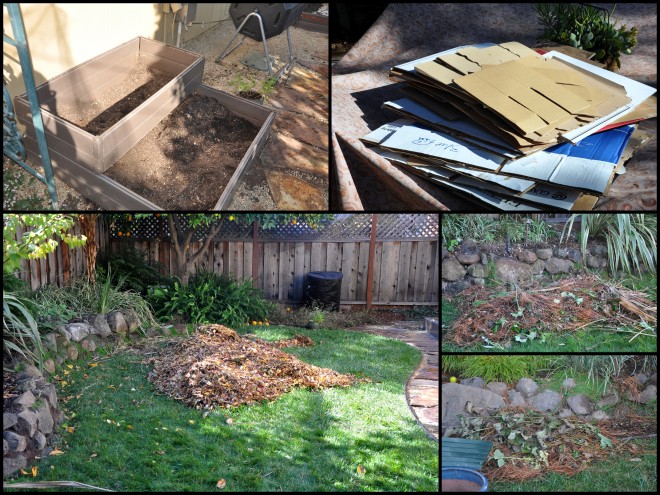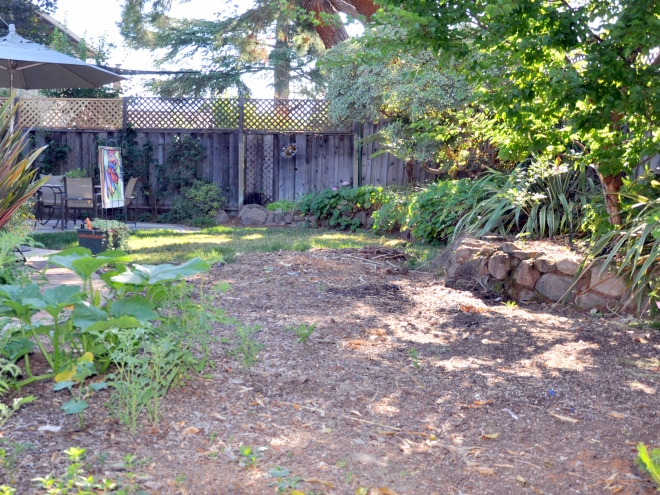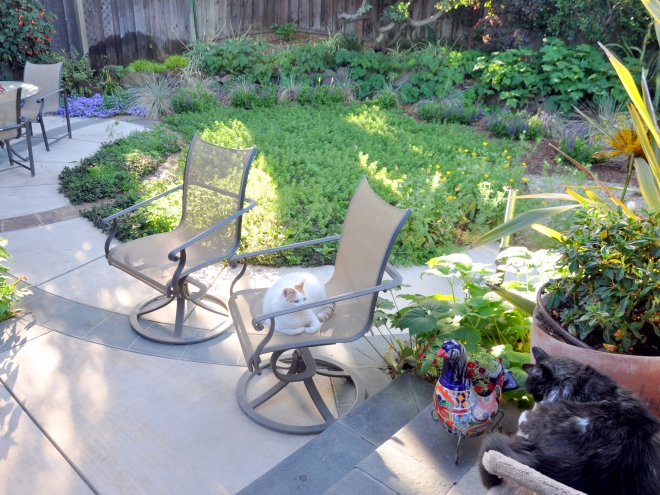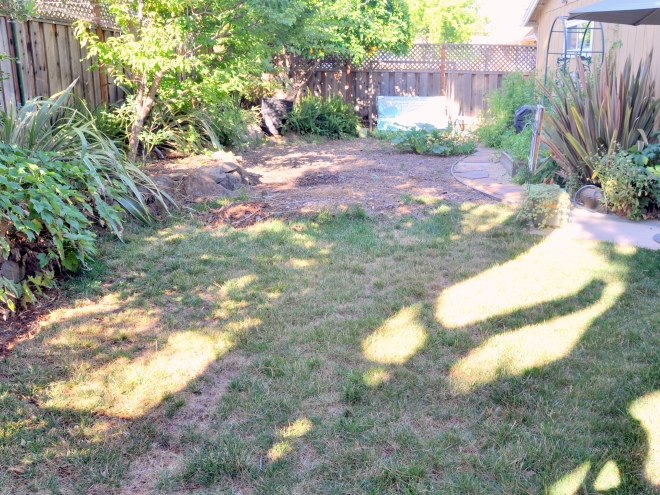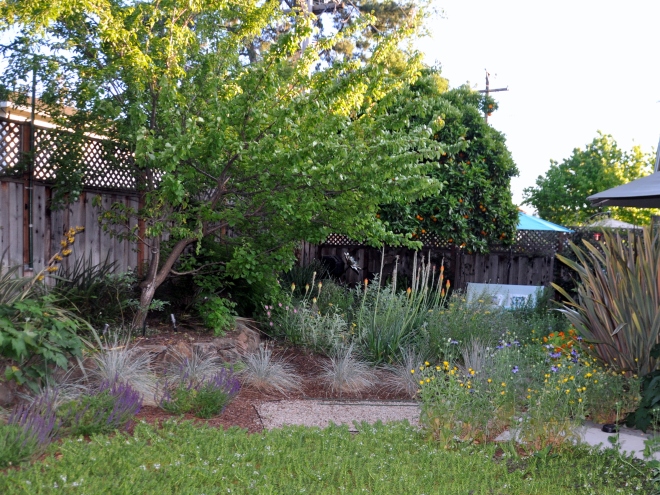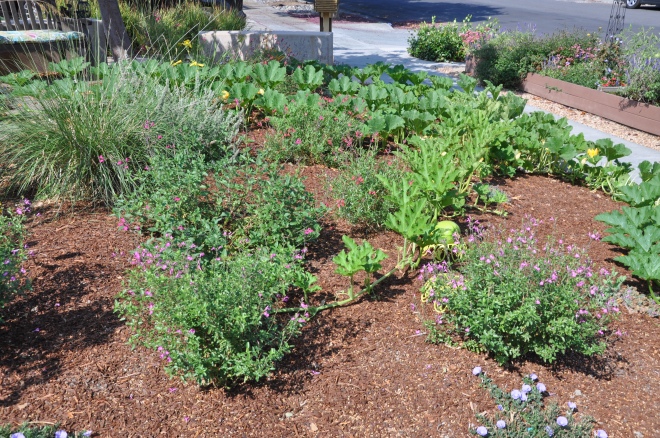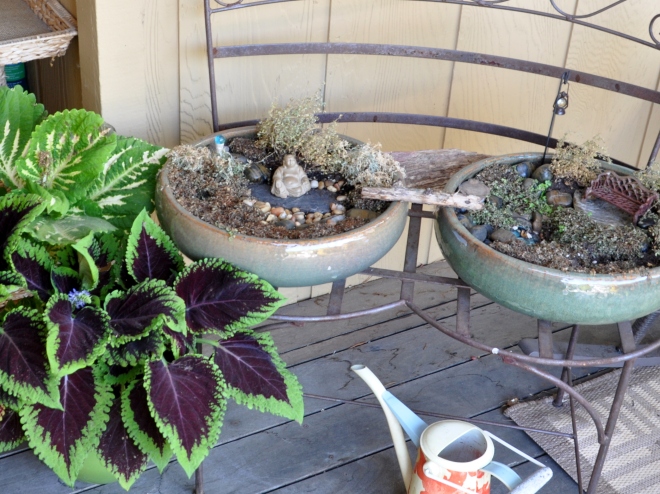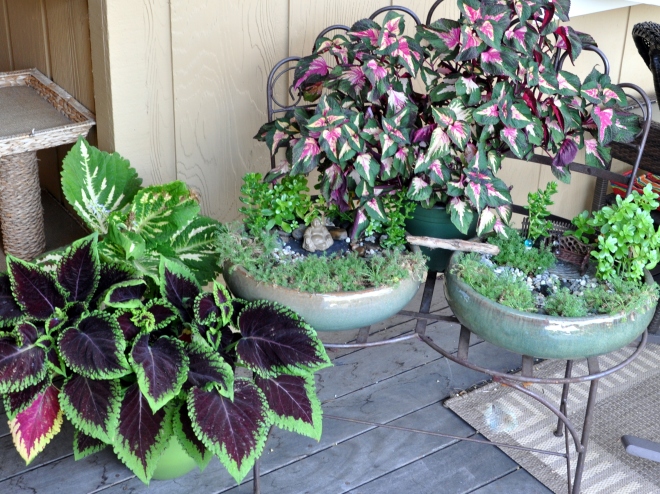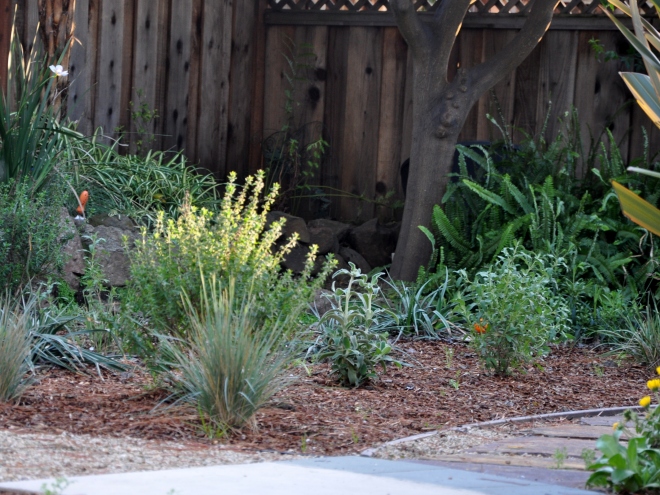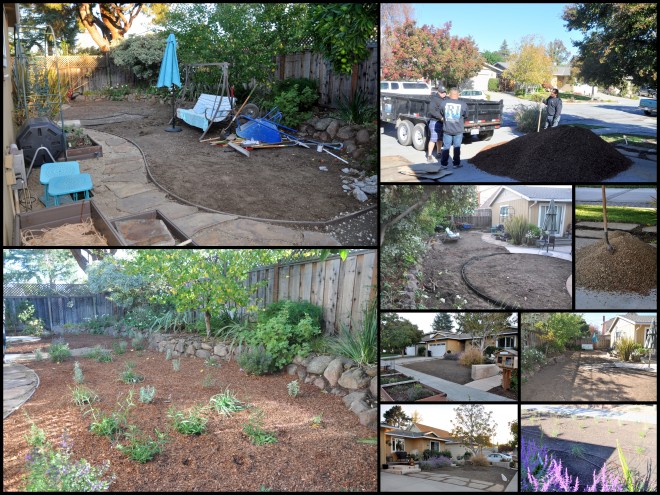One of the simple pleasures of gardening is the ever-changing landscape. No two plants are alike and no two seasons are quite the same. There are happy accidents everywhere, helping balance the ever-present and predictable weeds. San Jose summers are hot and long, but occasionally nature serves us a reprieve. I relish those days when the stars align and I have both the time and the weather to spend outdoors getting things done.
Of all the things you can grow in a small garden, pumpkins are among the most spectacular. It seems you can witness the change every day. Within 90 to 100 days, one healthy seed can sprout, grow, flower and fruit, trailing across the landscape at amazing speed.
A couple of pumpkin seeds took root in our narrow and shady side yard, with one of those two vines traveling the length of the house and eventually rounding the corner. That vine is now winding its way across the patio. With leaves the size of a platter and flowers as broad as your hand, watching pumpkin plants grow evokes a certain optimism and joy.
Years of drought brought about many changes to our garden. It started with the removal of the “grass strip” between our sidewalk and the street. My husband grew up with spacious, green lawns. His reluctance to remove the lawn took some time to overcome, but in the end we replaced all of our lawn with native plants.
In preparation, I sheet-mulched half of the back yard for close to a year. The process destroyed the lawn, amended the soil, and prepared the area for native plants, all at the same time.
We replanted the entire area with California native and drought tolerant plants. They use far less water than a lawn, attract beneficial insects and birds, and are healthier than the monoculture of a lawn.
Removing the front lawn also brought about interesting changes. The act of turning the soil for native plants invigorated dormant seeds. The year after the lawn came out, we not only had native plants but sweet peas, cornflowers, California poppies and Nigella.
When the garden looked bare after the sweet peas went to seed, I hit upon the idea of planting pumpkin vines in their place.
I’m enjoying the variety of successive planting. I smile when I see a neighbor through my kitchen window slowing down to look at the garden. Tending a healthy garden means others can passively enjoy it too.
Learning to love succulents has been another big change for me. One by one though, I’ve been replacing potted annuals with succulents.
Succulents are well suited to our dry, arid climate. They get along well sitting in sandy soil. I water them sparingly, perhaps once a month, and in turn they reward me with color change and tiny blooms.
I planted a miniature peace garden earlier this year, only to see it collapse during a heat wave. The baby tears baked in the sun, even under the eaves of our house. I slipped out a few times to water the plants, but that tiny garden didn’t survive in the shallow bowl and the pounding sun.
Since I refuse to embrace any metaphors about a dead or dying peace garden, I composted the dried plants and started over. This time I changed out the annual baby tears for succulents and added chamomile, which can go almost dry between watering. I shaded the entire mini garden with a coleus, my one concession this summer to a water-loving plant. I find the color variations irresistible.
There is a twinkle of autumn in the air today, a reminder of the seasons ahead. My garden is a wonderful teacher, regularly reminding me that change is good.
Are there interesting changes going on in your life?

